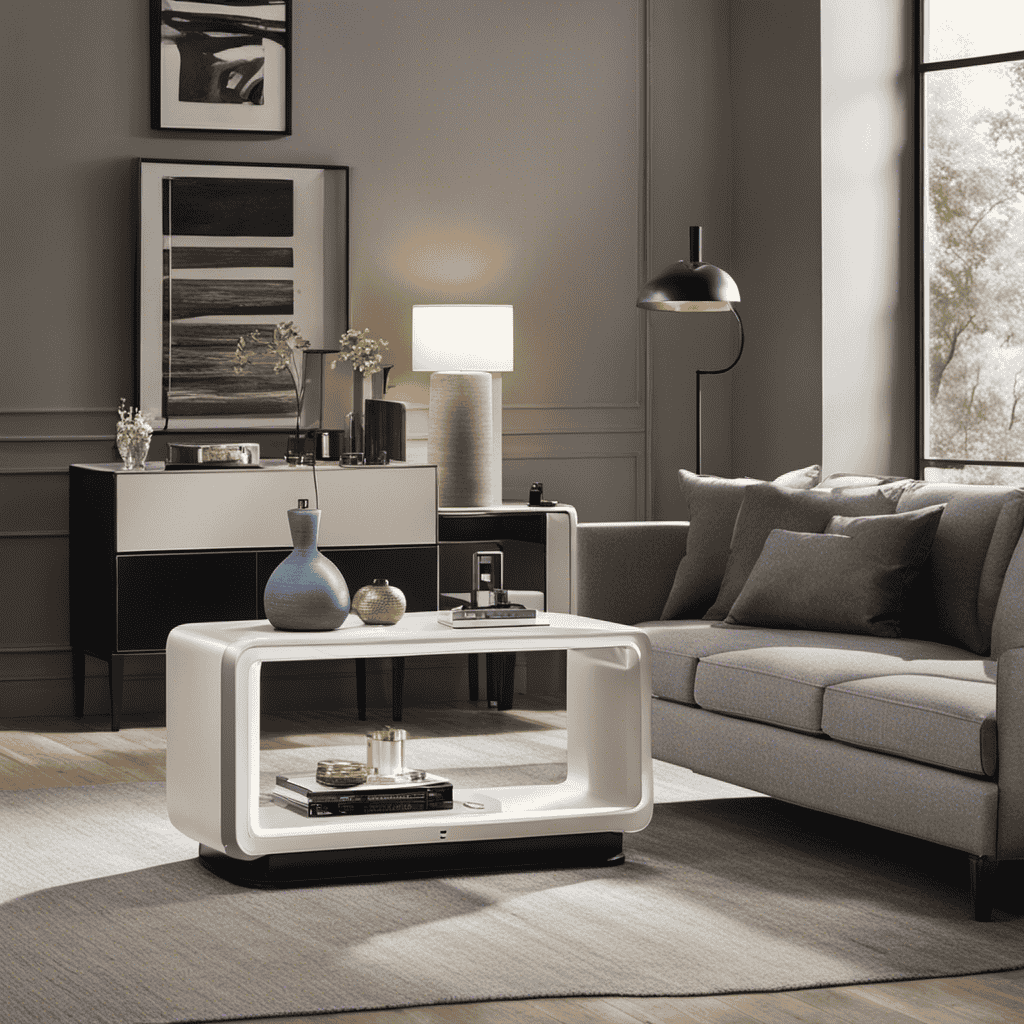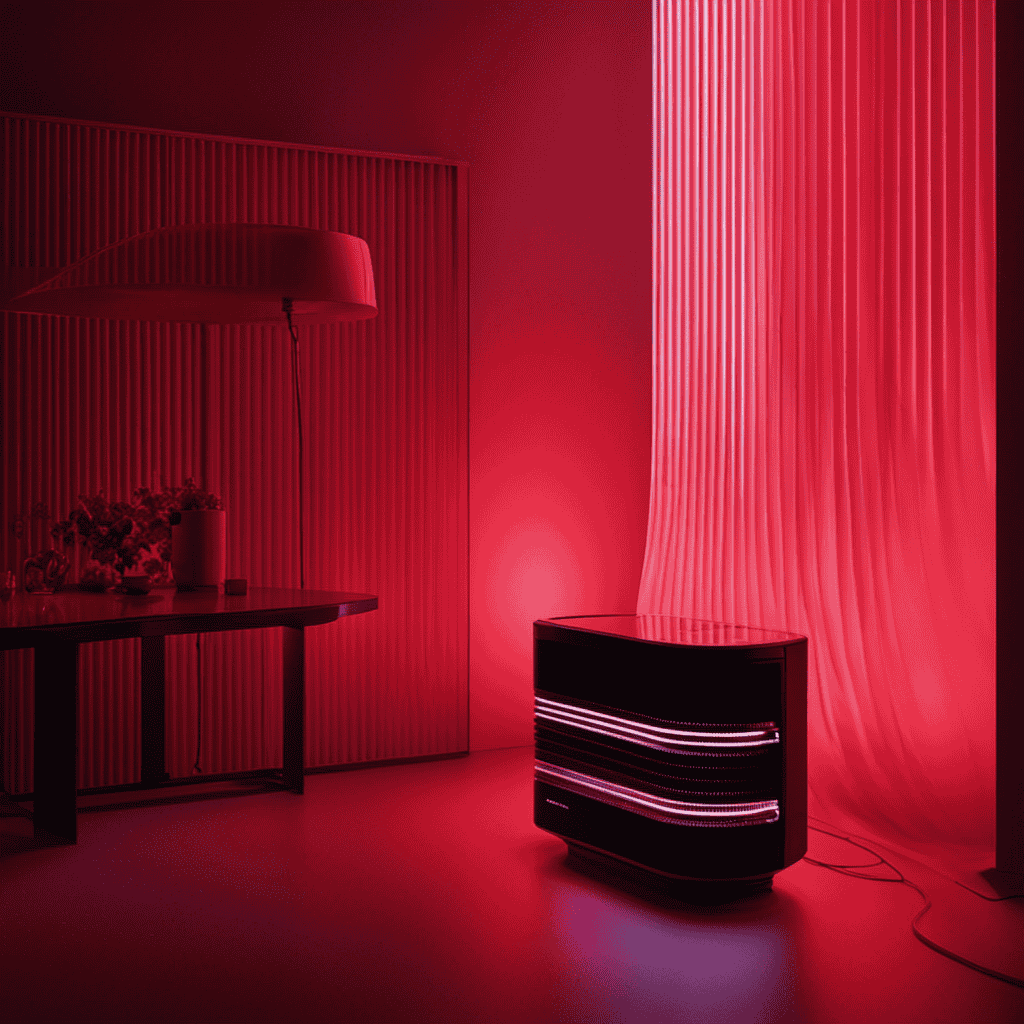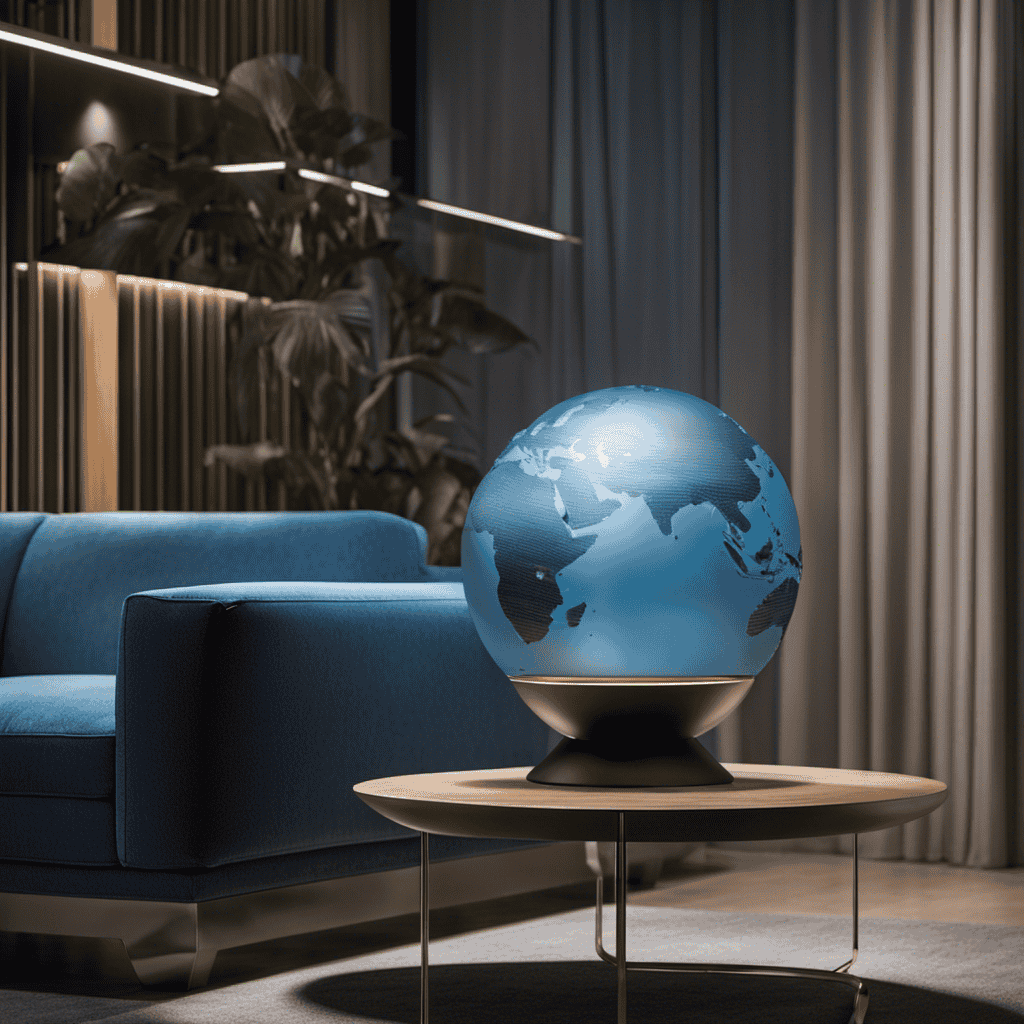As a dedicated air purifier user, I have learned the significance of changing filters promptly.
Knowing when to replace your air purifier filter is crucial in maintaining optimal indoor air quality.
In this article, we will explore the signs that indicate the need for a filter replacement, the factors that affect filter lifespan, and how often you should change your air purifier filter.
So, buckle up and let’s dive into the world of clean air!
Key Takeaways
- Regularly changing the filter maintains the effectiveness of the air purifier.
- Signs that your air purifier filter needs replacement include dust buildup, reduced airflow, unpleasant odors, and increased allergies or respiratory issues.
- Factors that determine filter lifespan include air quality, presence of pollutants, frequency of use, room size, and following manufacturer’s recommendations.
- Adhere to the recommended replacement schedule and follow proper maintenance tips to extend the life of your air purifier filter.
Understanding the Importance of Regular Filter Changes
Regularly changing the filter is crucial for maintaining the effectiveness of your air purifier. Proper air filter maintenance ensures that your purifier is able to efficiently remove pollutants and allergens from the air.
Clean air filters offer a range of benefits, including improved air quality and reduced respiratory issues. When the filter becomes clogged with dirt, dust, and other particles, it can restrict airflow and decrease the purifier’s ability to clean the air effectively. This can lead to decreased performance and increased energy consumption.
Signs That Your Air Purifier Filter Needs Replacement
You should keep an eye out for signs that your air purifier’s filter needs replacing. Regular maintenance is crucial to ensure optimal performance and clean air in your home. Here are some common mistakes to avoid and maintenance tips to keep in mind:
-
Dust buildup on the filter: If you notice a thick layer of dust on the filter, it’s a clear indication that it needs to be replaced.
-
Reduced airflow: A clogged filter restricts airflow and can diminish the purifier’s effectiveness. If you feel that the air circulation has decreased, it’s time for a new filter.
-
Unpleasant odors: If your air purifier starts emitting unpleasant smells, it could be a sign that the filter is no longer able to effectively remove pollutants from the air.
-
Increased allergies or respiratory issues: If you or your family members experience more frequent allergies or respiratory problems, it may be due to a filter that is no longer able to capture allergens.
Factors That Determine Filter Lifespan
One of the factors that determines how long a filter lasts is the quality of the air in your home. The efficiency of a filter can be affected by various factors such as the presence of pet dander, pollen, dust, and other airborne particles. Additionally, the frequency of use and the size of the room being filtered can also impact the lifespan of the filter.
It is important to note that common mistakes when changing filters can also affect their efficiency. These include not following the manufacturer’s recommendations for filter replacement, not properly installing the filter, or using low-quality filters. By considering these factors and avoiding these mistakes, you can ensure that your air purifier filter lasts longer and maintains its effectiveness.
Now, let’s move on to discussing how often you should change your air purifier filter.
How Often Should You Change Your Air Purifier Filter
To maintain optimal filtration, it’s crucial to adhere to the recommended replacement schedule for your air purifier’s filter. Regularly changing the filter not only ensures clean air but also extends the lifespan of the purifier itself.
Here are a few key points to consider when determining how often to change your air purifier filter:
- Air Quality: If you live in an area with high pollution or have allergies, you may need to change the filter more frequently.
- Manufacturer Recommendations: Each air purifier model has its own recommended filter replacement schedule, so it’s important to follow the manufacturer’s guidelines.
- Filter Type: Different types of filters, such as HEPA or activated carbon, have different lifespans and need to be replaced accordingly.
- Usage: The more you use your air purifier, the more frequently the filter will need to be changed.
Step-by-Step Guide to Changing the Filter on Your Air Purifier
When it’s time for a filter replacement, start by turning off and unplugging your air purifier. Proper maintenance techniques for air purifier filters are crucial to ensure efficient operation and clean air in your space.
Firstly, consult the manufacturer’s instructions to determine the specific type of filter your unit requires. Most filters can be accessed by removing the front or back cover of the purifier. Carefully remove the old filter, making sure to dispose of it properly.
Before installing the new filter, it’s important to clean the surrounding area to prevent any dirt or debris from entering the unit. Install the new filter according to the manufacturer’s instructions, ensuring a tight fit.
Common mistakes to avoid when changing air purifier filters include neglecting regular filter maintenance, using the wrong type of filter, and failing to properly clean the unit before installing the new filter.
Tips to Extend the Life of Your Air Purifier Filter
Proper maintenance of your air purifier’s filter can help prolong its lifespan and ensure optimal performance. Here are some tips for cleaning air filters and common mistakes to avoid when changing air purifier filters:
-
Clean the filter regularly: Regularly cleaning the filter helps remove dust, allergens, and other particles, ensuring efficient air purification.
-
Follow the manufacturer’s instructions: Each air purifier may have specific cleaning instructions, so it’s essential to read and follow them carefully.
-
Use the right cleaning method: Depending on the type of filter, you may need to vacuum, wash, or replace it. Using the correct cleaning method ensures the best results.
-
Avoid harsh chemicals: When cleaning the filter, avoid using harsh chemicals that could damage the filter or release harmful substances into the air.
Frequently Asked Questions
Can I Clean and Reuse My Air Purifier Filter Instead of Replacing It?
I can’t clean and reuse my air purifier filter. It’s best to replace it when it becomes dirty or clogged. There are no alternative filter options for my specific purifier model.
Will Using a Higher Quality Filter Make It Last Longer?
Using a higher quality filter can extend its lifespan. Factors like air quality and usage time affect filter maintenance. Regularly cleaning and replacing filters is crucial for optimal air purifier performance.
Can I Use My Air Purifier Without a Filter?
Using an air purifier without a filter has its pros and cons. The main advantage is cost savings, but it can’t effectively remove pollutants. Alternatives like electrostatic precipitators or UV-C light can be considered.
How Much Does a Replacement Filter for My Air Purifier Cost?
Replacement filters for my air purifier can vary in cost depending on the brand and model. To find the best price, I recommend checking online retailers like Amazon or the manufacturer’s website.
Can I Use a Filter From a Different Brand in My Air Purifier?
Is it safe to use a non-branded filter in my air purifier? Using a filter from a different brand in my air purifier, will it affect its performance? It’s important to stick to the recommended filter for optimal results.
Conclusion
In conclusion, regularly changing the filter on your air purifier is of paramount importance. Failing to do so can lead to poor air quality, decreased efficiency, and potential health risks.
By paying attention to signs such as reduced airflow and unpleasant odors, you can determine when it’s time for a replacement. Factors like usage and air quality also influence the lifespan of your filter.
Following a step-by-step guide and implementing tips to prolong its life will ensure your air purifier continues to provide pure, pristine air. Don’t delay, change that filter today!










